‘Narrative prosthesis’ is a term used by David Mitchell and Sharon Snyder to show how disability
has been used throughout history as a crutch upon which literary narratives lean for their representational power, disruptive potentiality, and analytical insight (p. 49).
Many science fiction and fantasy works, for example, have approached disability with the intent to use it as a literary metaphor for other forms of difference or discrimination. The reverse also applies: by depicting a character as Other, such as with lycanthropy or vampirism, authors reference real-life sources of exclusion. Some choose to re-imagine the current technological possibilities of prosthetics and aids, allowing disabled characters to surpass able characters in physical or mental ability. Yet other works turn disability into a superpower, or prerequisite for a superpower, thus negating the consequences of not being able to fully participate in a society designed for able bodies and minds.
Mitchell, D. T., & Snyder, S. L. (2014). Narrative Prosthesis: Disability and the Dependencies of Discourse. University of Michigan Press.
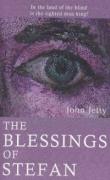
'A thousand years hence is a city, deep underground, where every single person is blind. Except for Thurii Brook of Summerisland - he alone can see.
'This is the story of Thurii and of Corinth, eldest daughter of the Lords Spiritual. What terrible tragedy had happened all those years ago so frightening the Church that it had closed ranks and engaged in a massive cover-up?
'Corinth's father - the Lords Spiritual. What was his part in this? And Thurii? For he too was inextricably involved.
(...more)This work reverses the expectation of sighted people being the norm, casting them instead as irregularities. Thurii, the only slighted character in an underground city of the blind, is embarrassing to his compatriots: his tendency to leave things lying around is frustrating and his 'trick' of touching things at a distance seen as a distasteful aberration.
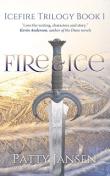
The Icefire Trilogy is set in a world where power has shifted away from both its old wielders (the royal family) and its old technologies (a mysterious machine called the Heart of the City). The Heart of the City can only be controlled by those born with physical disabilities, called Imperfects and turned by the machine into ghostly servitors. For fifty years, the Eagle Knights who now rule the country have hunted and killed Imperfects, to prevent the descendants of the old king from using the machine.
(...more)In this series, only characters born with physical disabilities can channel the power of the Heart of the City, a technologies magic source. However, the machine turns them into ghostly servitors, so their control of it is always at a remove and in service to the former royal family.
The series comprises three books:
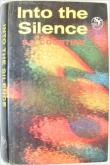
'Silence engulfs the Earth and the loss of spoken-word Communication brings chaos.'
Source: The Encyclopedia of Science Fiction
(...more)Courtier's novel turns on a wholesale loss of hearing across the world, upending the sense of hearing as normative and deafness as the exception. Courtier suffered a stroke in 1967, which devastated his speech and affected his movement, and devised a series of speech exercises to re-teach himself (Denham Groves, Victims and Villains, Ramble House, 2009, p.29). Four of his novels, including Into the Silence, feature sensory loss or limitation in some form: movement in No Obelisk for Emily, memory in Dead If I Remember, and sanity in The Smiling Trip.

This work features lycanthropy as a metaphor for disability.
As Roslyn Weaver writes in 'Metaphors of Monstrosity : The Werewolf as Disability and Illness in Harry Potter and Jatta', the novel explores a social model of disability, with the author's explicit intention being to 'write a story about a princess with a disability'.
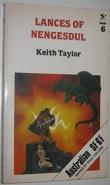
'An acrobat, trick rider and Midget, his world was the circus. This new world of Barcui was a nightmare to him. Their survival tried him to his limits. Yet he found one amazing compensation. On Barcui, his size was normal. He discovered that among the first men he met... the men who carried the deadly... Lances of Nengesdul.' (Publication summary)
(...more)In this work, a character whose height is considered a disability in 'our' world finds himself in a world where normative adult stature matches his. In this sense, the novel is descended from works such as The Wizard of Oz, where the child protagonist finds themselves adult-sized in a fantasy world. With child protagonists, however, small stature lacks the stigma that Taylor's protagonist faces.

A trilogy of novels in which a teenager needs to come to terms not only with the magical background of her own family (centred on her terrifying grandmother) but also with the abject and destructive force of magic itself, which enacts a terrible price for its use.
(...more)As Troy Potter points out (see Critical Reading), these novels position magic as inherently disabling: its damaging effects are such that to use it is to die young and to ignore it is to go mad. Interestingly, Larbalestier also builds the concept of metaphor into her world building: as magic users understand magic metaphorically (seeing it as number sequences or geometric shapes) rather than directly, they must also understand how metaphor works to wield their magic.
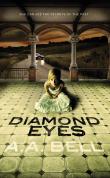
A trilogy of novels that begin with Mira Grant, blind, orphaned, traumatised, and institutionalised, and follow her attempts to regain her independence and forge a career investigating mysteries, with the aid of her mysterious ability to see into the past.
(...more)Mira Grant is blind, but she can see images of the past. Not only is she disadvantaged once objects move in the present, and therefore into the space of her blindness, but she is also institutionalised, patronised, and mistreated.
The series comprises three books:
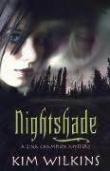
While this novel seriously explores anorexia and the dangers of eating disorders, it does so through the motif of a starving and malicious spirit, generated from a famine and latching onto a modern girl's sense of uncertainty about her own body.
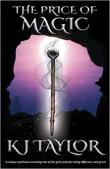
'Big things are expected of Pip. Can he deliver?
'Magic is all around him and he is expected to be a great mage, but the path before Pip isn’t simple. Will he fulfil his parents’ expectations? Will he fulfil his own?
'In Pip's world, it is only those born with defects or deformities who are magical.'
Source: Publisher blurb.
(...more)In this work, magic exacts a cost for its use, meaning it is primarily in the hands of people with physical disabilities, mental illnesses, or chronic health conditions. In an interview, author K.J. Taylor outlines his own teenage diagnosis of Asperger's, his determination to avoid 'disability as inspiration' tropes, and the ways in which the wizards of his world still isolate and fail some types of disabilities, particularly mental illness.

The Zeroes are teenagers, all born in the year 2000, and all with a superpower that they barely comprehend: weaponised charisma, the ability to see only through others's eyes, power over crowds, destructive interactions with technology.
The series begins after the splintering of the Zeroes, and follows their reconciliation when a member of their group is involved in a bank robbery.
(...more)In this series, a blind character can only see through other people's eyes, leaving her completely blind when alone. Zeroes was something of a divisive text when it was published, with Kirkus Review noting that Riley's magic vision was 'overdone and too-obvious'.
The series comprises three books:
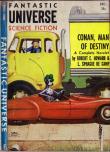
Continues the story of the child from 'Infant Prodigy'.
Dr Jim Ballantine is a psychiatrist who has been enlisting the help of Joan, a psychic mutant, in diagnosing and aiding his patients. They have known each other since Joan was a baby, as Ballantine was responsible for diagnosing her abilities. Joan displays her powers with a man suffering from paranoia.
(...more)In this work and its prequel, the main character's psychic abilities counteract her speech impediment (but cause additional concerns).

Dr James Ballantine continues to work with a young girl, Joan, who has telepathic powers. They run through tests confirming the extent of her abilities. The source of her power is unknown, but may be linked to the radioactivity overexposure that also gave her her albinism and lack of vocal cords.
(...more)In this work and its sequel, the main character's psychic abilities counteract her speech impediment (but cause additional concerns).
Here the disability is less metaphorical and more illusory: the paralysis does not extend beyond the dream state, but enables the dreamer to experience his own death and funeral in an agony of isolation. The work draws on a long tradition of 'buried alive' narratives that exploit fears of paralysis and of comatose states.

'A girl in hiding, a deadly curse and a prophecy an empire is ready to destroy...
'Concealing her hideous affliction beneath a witch's robes and spells, Tash Severin embarks on a journey that may be her only hope of living a normal life, free of pain and scorn.
'The Pool of Rathorne's healing waters promise a cure in a world where the crippled are shunned and the Cursed are imprisoned.
'But a chance meeting with the enigmatic Raoul Duberger changes Tash's journey - and her life.
(...more)This work (a short story published as a standalone ebook) features a magical plague that leads to physical deformity and social revulsion similar to the historic status of leprosy. The protagonist's quest centres on the fantasy trope of a 'magical cure' that heals both affliction and social isolation.
Far away from the ocean, Gerald finds a dead water bird that reminds him of his childhood town. His strange magnetic imbalance means that he has difficulty navigating, and magnetic instruments such as watches stop working around him, leaving him adrift in space and time and unable to hold down a job.
Feeling a kinship with the lost bird, he preserves its corpse and brings it to first a vet, then a university ornithologist to identify it. It turns out to be an Arctic tern. Gerald decides to have it preserved, and finds himself appreciating his life outside the clutches of space and time for the first time.
(...more)In this work, a character has a strange magnetic imbalance that poses significant difficulties to his daily life.
A girl with a monster living in her shadow is raised to be blind in order to control it.
(...more)In this work, a character is purposefully kept in complete darkness and raised to be blind in order to control their attached 'shadow monster'. Published in 2012, this story shares some of the concerns of more recent works such as Josh Malerman's Bird Box (2014), where characters live in imposed blindness to avoid a supernatural threat, and the film A Quiet Place (2018), in which silence and deafness become survival traits after an alien invasion.
On Australian Works
Ellis, Kate. 'Disrupting Strength, Power and Perfect Bodies: Disability as Narrative Prosthesis in 1990s Australian National Cinema.' Nebula, vol. 7, no. 1-2, 2010, 98-107.
Potter, Troy. 'Abject Magic: Reasoning Madness in Justine Larbalestier’s Magic or Madness Trilogy.' Children's Literature in Education, vol. 45, no. 3, 2014, 255-270.
Weaver, Roslyn. 'Metaphors of Monstrosity: The Werewolf as Disability and Illness in Harry Potter and Jatta'. Papers, vol. 2, no. 20, 2010, 70-82.
On International Works
Croft, Janet Brennan, ed. Lois McMaster Bujold: Essays on a Modern Master of Science Fiction and Fantasy. McFarland, 2013. [Contains multiple analyses of Miles Vorkosigan, the disabled protagonist of Bujold's longest-running series, The Vorkosigan Saga.]
Hamilton, Sheryl N., and Neil Gerlach. '"It Won't Always Be Wrong": Morality and Monsters in Legal Rational Authority.' Law, Culture and the Humanities, vol. 6, no. 3, 2010, 394-419. [Discusses Kit Whitfield's Bareback.]
Lacey, Eve. 'Child's Play: Illustrated Bodies and Traces of Disability.' Textual Practice, vol. 30, no. 5, 2016, 795-812. [Discusses Jacqueline Wilson and David Almond.]
McMahon-Coleman, Kimberley. 'What Elena Did: Dis/ability in The Vampire Diaries.' Journal of Asia-Pacific Pop Culture, vol. 1, no. 2, 2016, 165-180. [Discusses CW television series The Vampire Diaries.]
Stemp, Jane. 'Devices and Desires: Science Fiction, Fantasy and Disability in Literature for Young People.' Disability Studies Quarterly, vol. 24, no. 1, 2004. [Discusses, among others, John Wyndham, Andre Norton, and Anne McCaffrey.]
Wälivaara, Josefine. 'Blind Warriors, Supercrips, and Techno-Marvels: Challenging Depictions of Disability in Star Wars.' Journal of Popular Culture, vol. 51, no. 4, 2018, 1036-1056. [Discusses the Star Wars universe with a focus on Rogue One.]
You might be interested in...